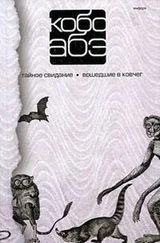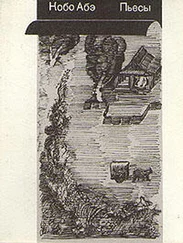Кобо Абэ - The Ark Sakura
Здесь есть возможность читать онлайн «Кобо Абэ - The Ark Sakura» весь текст электронной книги совершенно бесплатно (целиком полную версию без сокращений). В некоторых случаях можно слушать аудио, скачать через торрент в формате fb2 и присутствует краткое содержание. Год выпуска: 1988, Жанр: Современная проза, на английском языке. Описание произведения, (предисловие) а так же отзывы посетителей доступны на портале библиотеки ЛибКат.
- Название:The Ark Sakura
- Автор:
- Жанр:
- Год:1988
- ISBN:нет данных
- Рейтинг книги:3 / 5. Голосов: 1
-
Избранное:Добавить в избранное
- Отзывы:
-
Ваша оценка:
- 60
- 1
- 2
- 3
- 4
- 5
The Ark Sakura: краткое содержание, описание и аннотация
Предлагаем к чтению аннотацию, описание, краткое содержание или предисловие (зависит от того, что написал сам автор книги «The Ark Sakura»). Если вы не нашли необходимую информацию о книге — напишите в комментариях, мы постараемся отыскать её.
The Ark Sakura — читать онлайн бесплатно полную книгу (весь текст) целиком
Ниже представлен текст книги, разбитый по страницам. Система сохранения места последней прочитанной страницы, позволяет с удобством читать онлайн бесплатно книгу «The Ark Sakura», без необходимости каждый раз заново искать на чём Вы остановились. Поставьте закладку, и сможете в любой момент перейти на страницу, на которой закончили чтение.
Интервал:
Закладка:
Kobo Abe
The Ark Sakur
Translated by Juliet Winters Carpenter
VINTAGE INTERNATIONAL
VINTAGE BOOKS NEW YORK
A DIVISION OF RANDOM HOUSE, INC.
First Vintage International Edition, March 1989
Copyright © 1988 by Alfred A. Knopf, Inc.
All rights reserved under International and Pan-American Copyright Conventions. Published in the United States by Random House, Inc., New York, and simultaneously in Canada by Random House of Canada Limited, Toronto.
Originally published in Japanese as Hakobune no Sakura by Shinchosa Co., Tokyo, Copyright © 1984 by Kobo Abe. This translation originally published, in hardcover, by Alfred A. Knopf, Inc., in 1988.
THE ARK SAKURA
1
MY NICKNAME IS PIG — OR MOLE
Once a month I go shopping downtown, near the prefectural offices. It takes me the better part of an hour to drive there, but since my purchases include a lot of specialized items — faucet packing, spare blades for power tools, large laminated dry cells, that sort of thing — the local shops won’t do. Besides, I’d rather not run into anyone I know. My nickname trails after me like a shadow.
My nickname is Pig — or Mole. I stand five feet eight inches tall, weigh two hundred fifteen pounds, and have round shoulders and stumpy arms and legs. Once, hoping to make myself more inconspicuous, I took to wearing a long black raincoat — but any hope I might have had was swept away when I walked by the new city hall complex on the broad avenue leading up to the station. The city hall building is a black steel frame covered with black glass, like a great black mirror; you have to pass it to get to the train station. With that raincoat on, I looked like a whale calf that had lost its way, or a discarded football, blackened from lying in the trash. Although the distorted reflection of my surroundings was amusing, my own twisted image seemed merely pitiful. Besides, in hot weather the crease in my double chin perspires so much that I break out in a rash; I can’t very well cool the underside of my chin against a stone wall the way I can my forehead or the soles of my feet. I even have trouble sleeping. A raincoat is simply out of the question. My reclusion deepens.
If I must have a nickname, let it be Mole, not Pig. Mole is not only the less unappealing of the two but also more fitting: for the last three years or so I’ve been living underground. Not in a cylindrical cave like a mole’s burrow but in a former quarry for architectural stone, with vertical walls and level ceilings and floors. The place is a vast underground complex where thousands of people could live, with over seventy stone rooms piled up every which way, all interconnected by stone stairways and tunnels. In size the rooms range from great halls like indoor stadiums to tiny cubby-holes where they used to take test samples. Of course there are no amenities like piped water or drainage, or power lines. No shops, no police station, no post office. The sole inhabitant is me. And so Mole will do for a name, at least until something better suggests itself.
When I go out I always take along a supply of two items: a key to the quarry entrance and a small card with a map on the back and the words “Boarding Pass — Ticket to Survival” on the front. Late last year I picked up thirty-five leather cases, and put one key and one card in each. I keep three in the pocket of my good pants. If I happen to come across any suitable candidates for my crew, I can invite them aboard on the spot. I’ve been ready for the last six months now, but the right sort of person has yet to appear.
Preparations for sailing are virtually complete; in fact, all I lack now is the crew. Despite the urgency of the situation, however, I have no intention of conducting any recruiting campaigns. Why should I? In payment for their labors, crew members will receive a gift of incalculable value — the gift of life itself. Were this known, I would be swamped with applicants. Just keeping order would be a problem. Call it an excuse for my retiring ways if you like, but I’ve always felt that eventually the right people will gravitate to me without my having to go search them out. So you see that whether I have any shopping to do or not, it is essential that I go out once a month or so to mingle with the crowds, come in contact with people, and make my observations.
Ordinarily I use the outdoor parking lot next to the prefectural offices, because the rates are low and it always has plenty of parking space. But today I decided to park underground, beneath the department store across from the station. The notice on a banner hanging from the roof caught my eye:
WONDERS AND CURIOSITIES NEVER SEEN BEFORE!
EXHIBITION AND SPOT SALE OF FAMILY
HEIRLOOMS AND TREASURES
This was obvious hype, but it succeeded in arousing my interest. Also, I wanted a look at the customers. When I entered the store, an announcement was being made to the effect that members of the general public were offering rarities and curios from their private collections for sale at the rooftop bazaar. Evidently I wasn’t the only one attracted; almost everyone in the elevator was headed for the roof.
I discovered that the entire rooftop was covered with a maze of some hundred or more stalls. It was like a festival or a fairground; a great tangle of people filled the aisles, some hurrying along, others hesitating in apparent bewilderment. Among the items available were these:
Key chains made of owl talons.
A “bear’s ass-scratcher,” looking something like dried seaweed. This was apparently a kind of parasitic plant; the seller himself had no idea what to do with it.
A cardboard box filled with assorted springs and cogwheels.
Three sets of horses’ teeth.
An old-fashioned inhalator, heated by using an alcohol lamp.
A sharpener for bamboo gramophone needles.
Two whale turds, each a foot in diameter.
Glass nails.
Ointment to rub on the trunk of an elephant with a cold; made in Singapore.
A bloodstained signal flag claimed by its owner to have been used in the Battle of the Japan Sea.
An adjustable ring with plastic ballpoint pen attached.
A sleep-inducing device to plug into your home computer; worn around the ankle, it applied rhythmic stimulation timed to the user’s heartbeat.
A jar of sixty-five-year-old shochu, low-class distilled spirits (“Drink at your own risk”).
An aluminum-can compressor, utilizing water pressure in accordance with the lever principle.
A privately printed telephone directory purporting to contain “all you need to know” (for residents of Nerima Ward, Tokyo).
3.3 pounds of powdered banana peel (a marijuana substitute?).
A stuffed sewer rat, nineteen inches long.
A baby doll that could suck on a bottle.
And then — the eupcaccia.
Camped somewhere in the heart of the maze was a stall with a display of insect specimens. The stallkeeper must have had in mind schoolchildren with vacation bug-collecting assignments to complete, but his display was devoid of popular items like butterflies and giant beetles. Several dozen little containers about the size of a pack of cigarettes lay heaped in the center of the counter, and that was all. Each was made of transparent acrylic plastic, and each appeared empty. Aluminum foil labels bore the name “Eupcaccia,” neatly typed, with the Japanese name in parentheses beneath: tokeimushi —clockbug.
The containers appeared empty only because their contents were so unimposing: what was inside looked like a relative of one of those nameless bugs that crawl through garbage, unnoticed and unloved. The salesman himself cut no great figure. His glasses had lenses like the bottoms of two Coke bottles, and the crown of his head bulged. All in all, a dour-looking fellow. Somewhat to my relief, he had customers to occupy him: a man and a young woman, both sensible-looking types, were turning containers over in their hands and studying them as they listened to the salesman’s pitch. I couldn’t help pausing to listen in, attracted as much by the authentic ring of “eupcaccia” as by the intriguing nickname, “clockbug.”
Читать дальшеИнтервал:
Закладка:
Похожие книги на «The Ark Sakura»
Представляем Вашему вниманию похожие книги на «The Ark Sakura» списком для выбора. Мы отобрали схожую по названию и смыслу литературу в надежде предоставить читателям больше вариантов отыскать новые, интересные, ещё непрочитанные произведения.
Обсуждение, отзывы о книге «The Ark Sakura» и просто собственные мнения читателей. Оставьте ваши комментарии, напишите, что Вы думаете о произведении, его смысле или главных героях. Укажите что конкретно понравилось, а что нет, и почему Вы так считаете.





